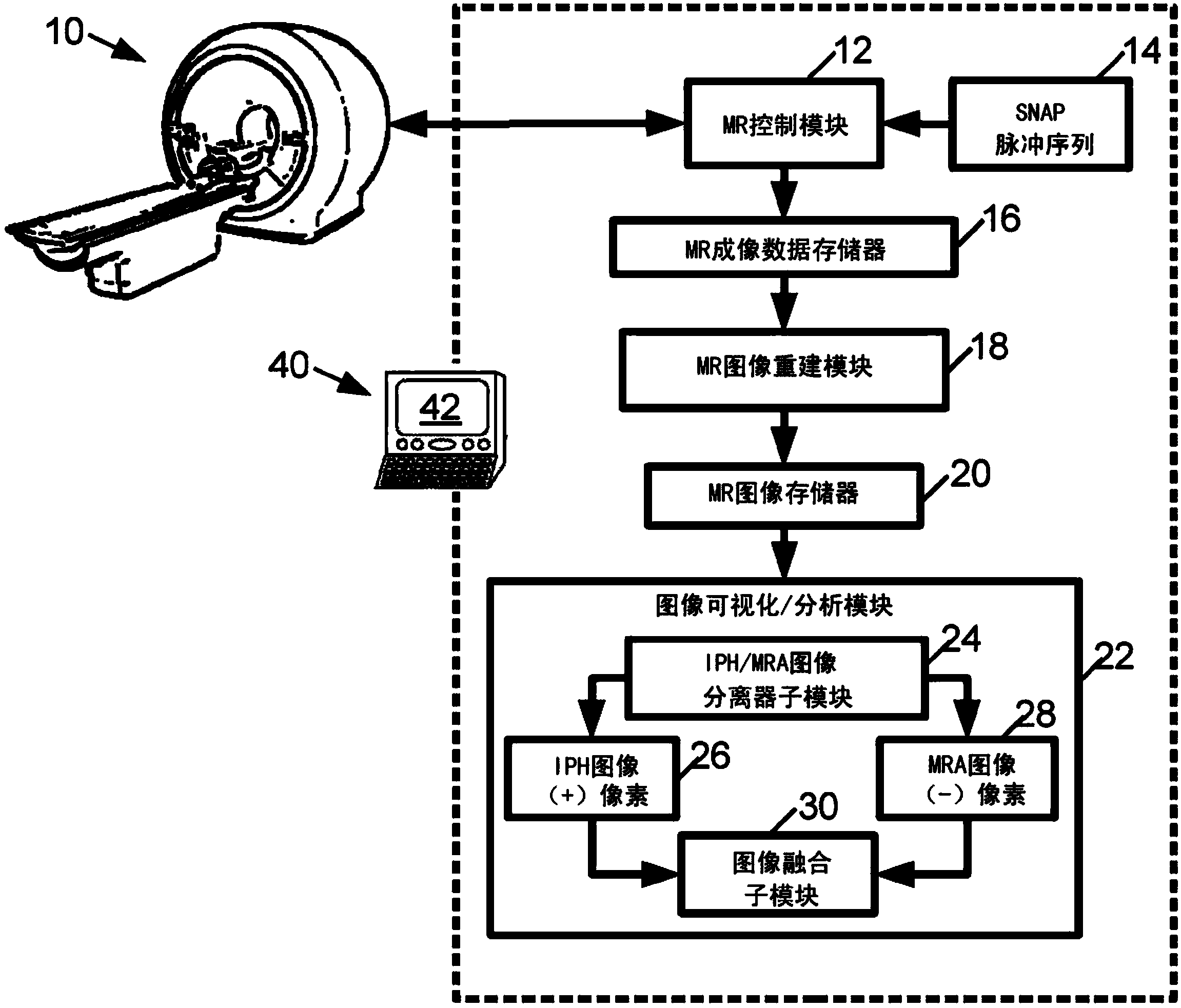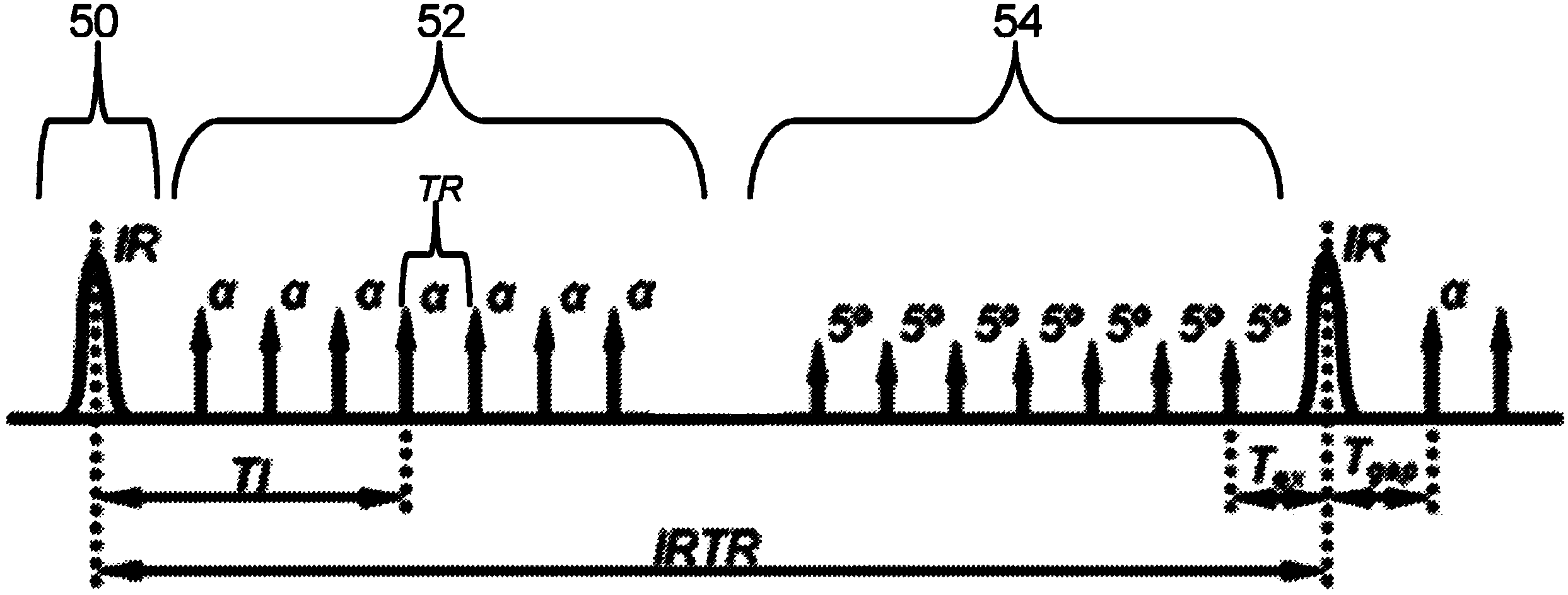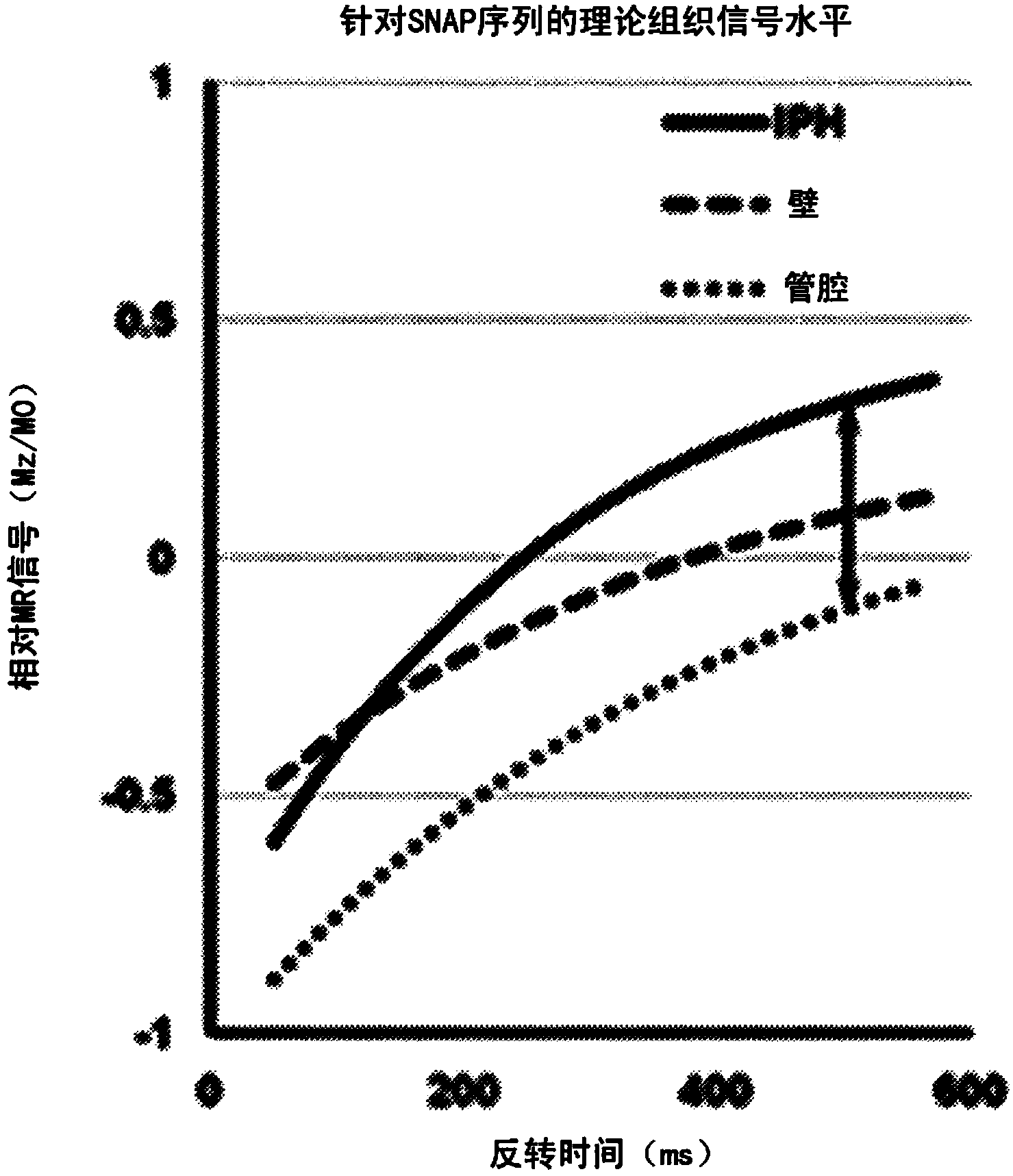Simultaneous non-contrast MR angiography and intraplaque hemorrhage (SNAP) MR imaging
An image and pixel technology, applied in the field of simultaneous non-contrast MR angiography and intraplaque hemorrhage (SNAP) MR imaging, can solve problems such as registration difficulties, achieve effective lumen delineation, improve review process, and high IPH contrast Effect
- Summary
- Abstract
- Description
- Claims
- Application Information
AI Technical Summary
Problems solved by technology
Method used
Image
Examples
Embodiment Construction
[0023] It is recognized herein that a technique capable of providing both magnetic resonance angiography (MRA) data and intraplaque hemorrhage (IPH) data simultaneously in one MR scan would be advantageous. Utilizing this technique not only reduces the extra scan time for IPH, but also automatically achieves spatial registration of IPH images with MRA images, thereby eliminating the need to match the two images at the time of diagnosis.
[0024] Disclosed herein are techniques that simultaneously provide both MRA data and IPH data in one MR scan. The disclosed technique is referred to herein as the simultaneous non-contrast angiography and plaque hemorrhage (SNAP) technique. SNAP offers the following advantages: (1) simultaneous detection and quantification of both luminal stenosis (via MRA) and IPH; (2) reduced scan time and improved review process by eliminating additional IPH scans, and automatic matching and registration; (3) provides both MRA and IPH data without the adm...
PUM
 Login to View More
Login to View More Abstract
Description
Claims
Application Information
 Login to View More
Login to View More - R&D
- Intellectual Property
- Life Sciences
- Materials
- Tech Scout
- Unparalleled Data Quality
- Higher Quality Content
- 60% Fewer Hallucinations
Browse by: Latest US Patents, China's latest patents, Technical Efficacy Thesaurus, Application Domain, Technology Topic, Popular Technical Reports.
© 2025 PatSnap. All rights reserved.Legal|Privacy policy|Modern Slavery Act Transparency Statement|Sitemap|About US| Contact US: help@patsnap.com



